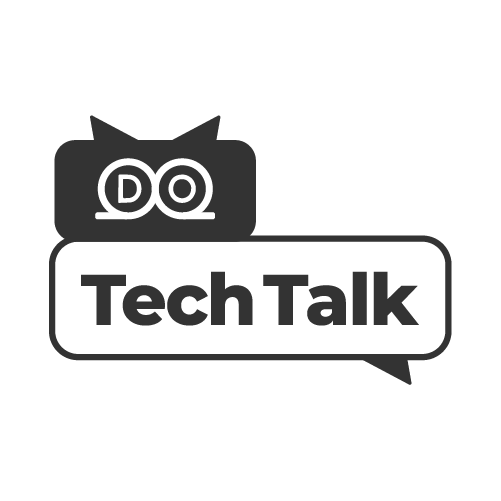Overview
Non-Fungible Tokens (NFTs) have ushered in a new era for creators, collectors, and enthusiasts alike by completely changing how we view and trade digital assets. Oracle Blockchain emerges as a major player in the NFT space, providing a strong infrastructure for creating, trading, and transacting digital assets, as the demand for decentralized and secure platforms rises. We will examine the complex process of configuring and executing NFTs on Oracle Blockchain in this extensive tutorial, offering both novice and expert users clear instructions and insightful information.
Comprehending Oracle Blockchain and NFTs
Let’s lay a foundational understanding of NFTs and Oracle Blockchain before getting into the specifics.
NFTs: Distinctiveness in the Virtual World
NFTs are cryptographic tokens that, on the blockchain, stand for ownership or authenticity verification of a singular object or piece of content. NFTs are indivisible and cannot be traded one-to-one, in contrast to cryptocurrencies like Bitcoin and Ethereum. Because each NFT has unique metadata, it is one-of-a-kind and irreplaceable.
Numerous industries, including digital art, gaming, music, and even real estate, have found use for these tokens. By tokenizing their creations, authors, and artists can maintain ownership and earn royalties from sales or usage of their works.
Oracle Blockchain: A Reliable Environment
Based on blockchain technology, Oracle Blockchain is a transparent, safe, and decentralized platform. It makes use of smart contract technology to enable safe, unchangeable transactions. Oracle Blockchain’s scalability, interoperability, and integration capabilities make it especially attractive to NFTs.
Configuring the Environment for Oracle Blockchain
With our foundational knowledge of NFTs and Oracle Blockchain, let’s get started on setting up your environment.
Get access to Oracle Blockchain
You must have access to Oracle Blockchain to begin. Usually, this entails choosing the relevant blockchain services and opening an account on the Oracle Cloud platform. To set up your blockchain instance, adhere to the instructions displayed on the screen.
Set up a New Blockchain Network
Make a new blockchain network after gaining access to Oracle Blockchain. This entails defining the network’s specifications, including its node count, consensus mechanism, and security setups. Pick a consensus algorithm, such as Proof of Work (PoW), Proof of Stake (PoS), or another technique, that fits the needs of your project.
Set Up Intelligent Contracts
Self-executing contracts, or smart contracts, have the terms of the contract directly encoded into the code. Smart contracts specify the guidelines and procedures controlling the creation, possession, and transfer of tokens within the framework of NFTs.
Set up your smart contract to perform NFT-specific tasks like transferring ownership, minting new tokens, and managing royalties. Since it serves as the foundation for your NFT ecosystem on Oracle Blockchain, this step is very important.
Making NFTs and Minting Them
It’s now possible to start the thrilling process of minting and creating your NFTs after setting up your Oracle Blockchain environment.
NFT Metadata Definition
Metadata, which contains information about the creator, the digital asset’s description, and any other pertinent details, is what gives NFTs their uniqueness. Establish a metadata structure that is compatible with your NFT project and make sure to include all relevant information.
The Minting Procedure
The process of generating new NFTs and giving them distinctive identifiers is known as minting. Call the mint function of the smart contract to start the minting process in your Oracle Blockchain environment. Each newly created NFT should have a distinct token ID generated by this function, along with the pertinent metadata.
Confirm and Examine
It is essential to confirm and validate the minting process before releasing your NFTs into the wild. Verify that the smart contract functions as intended, the tokens have unique identifiers, and the metadata is correct. Authenticity and integrity of your NFTs on Oracle Blockchain are guaranteed by this step.
Dealing with NFTs on the Oracle Blockchain
Let’s examine the Oracle Blockchain transaction process now that your NFTs have been created and are prepared for sale.
Make a Marketplace Smart Contract
Make a smart contract for the marketplace that serves as a middleman between buyers and sellers to enable NFT trades. This agreement should cover buying, selling, and managing the ownership transfer of NFTs.
Enumerate NFTs to Sell
As a seller, you can list your NFTs for sale using the marketplace smart contract. Indicate the cost, the mode of payment (usually in cryptocurrency), and any other special requirements. Your NFTs will become visible and buyable within the Oracle Blockchain ecosystem after taking this action.
Invest in NFTs
To start a transaction, buyers who are interested in your NFTs can communicate with the marketplace smart contract. Both the ownership of the NFT and the money transfer from the buyer to the seller will be managed by the smart contract. On the Oracle Blockchain, this procedure guarantees a transparent and safe transaction.
Automation of Smart Contracts and Royalties
Automating royalty payments is one of the special benefits of utilizing Oracle Blockchain for NFTs. Set up your smart contract so that it will automatically give the original creator a portion of every sale. This feature gives creators and artists a steady income stream as the value of their work increases, empowering them.
Best Practices and Things to Think About
A few best practices and things to keep in mind are crucial when navigating the NFT world on Oracle Blockchain.
Safety Procedures: Guarding Your NFT Ecosystem
Put strong security measures in place to protect your smart contracts and NFTs. This entails using secure coding techniques, conducting frequent audits, and making sure your Oracle Blockchain network is shielded from outside attacks. Take into consideration using Oracle’s security features to improve your NFT ecosystem’s resilience.
Legal and Compliance Factors: Handling the Regulatory Environment
Keep yourself updated on the regulatory and compliance environment that surrounds NFTs. Different jurisdictions may have different regulations, so it’s important to make sure your NFT project complies with all applicable laws. This covers things like taxation, data security, and intellectual property rights.
User Experience: Improving Acceptance and Accessibility
Put the user experience first to increase your NFT platform’s accessibility and uptake. This entails developing a user-friendly interface, giving precise minting and transacting instructions, and providing assistance to users who might be unfamiliar with blockchain technology and NFTs.
Connectivity: Overcoming the Divide Among Blockchains
Examine methods for interoperability to close the divide between various blockchains. Even though Oracle Blockchain offers a strong ecosystem, think about how your NFTs can communicate with other blockchain networks to increase the number of people who can use them and your reach.
In summary
For creators, collectors, and enthusiasts, setting up and transacting NFTs on Oracle Blockchain opens up a world of possibilities. You have been guided through all the necessary steps, from setting up a blockchain network to minting and transferring NFTs, by this in-depth guide. Leveraging Oracle Blockchain’s capabilities ensures a safe, open, and effective ecosystem for the creation and exchange of digital assets as the NFT space develops. Take your NFT journey to new heights by embracing the future of digital ownership and creativity with Oracle Blockchain.


